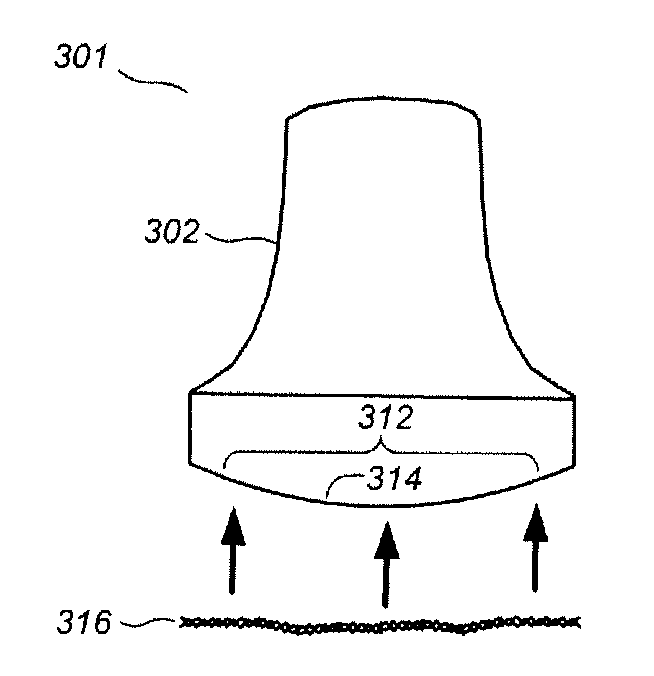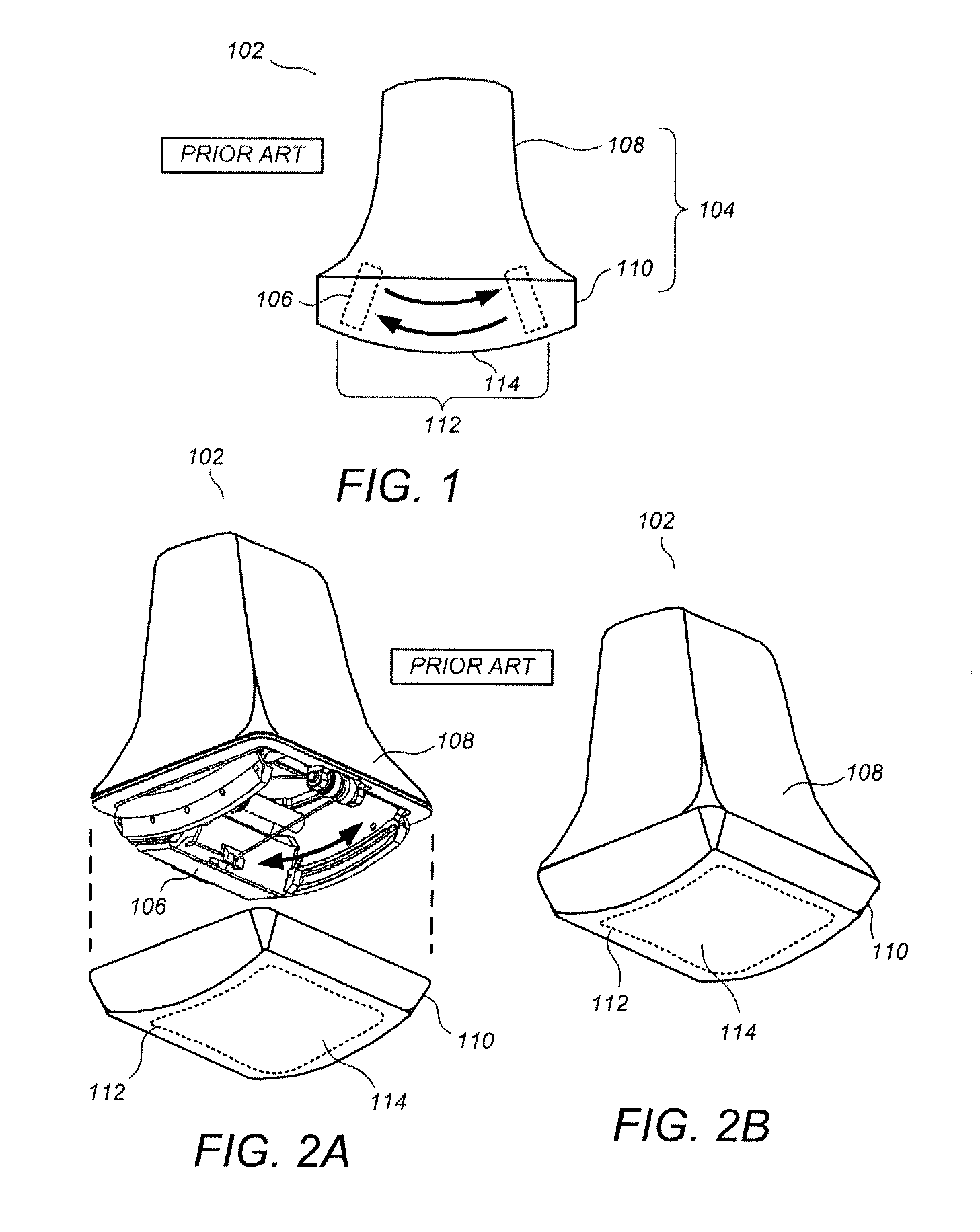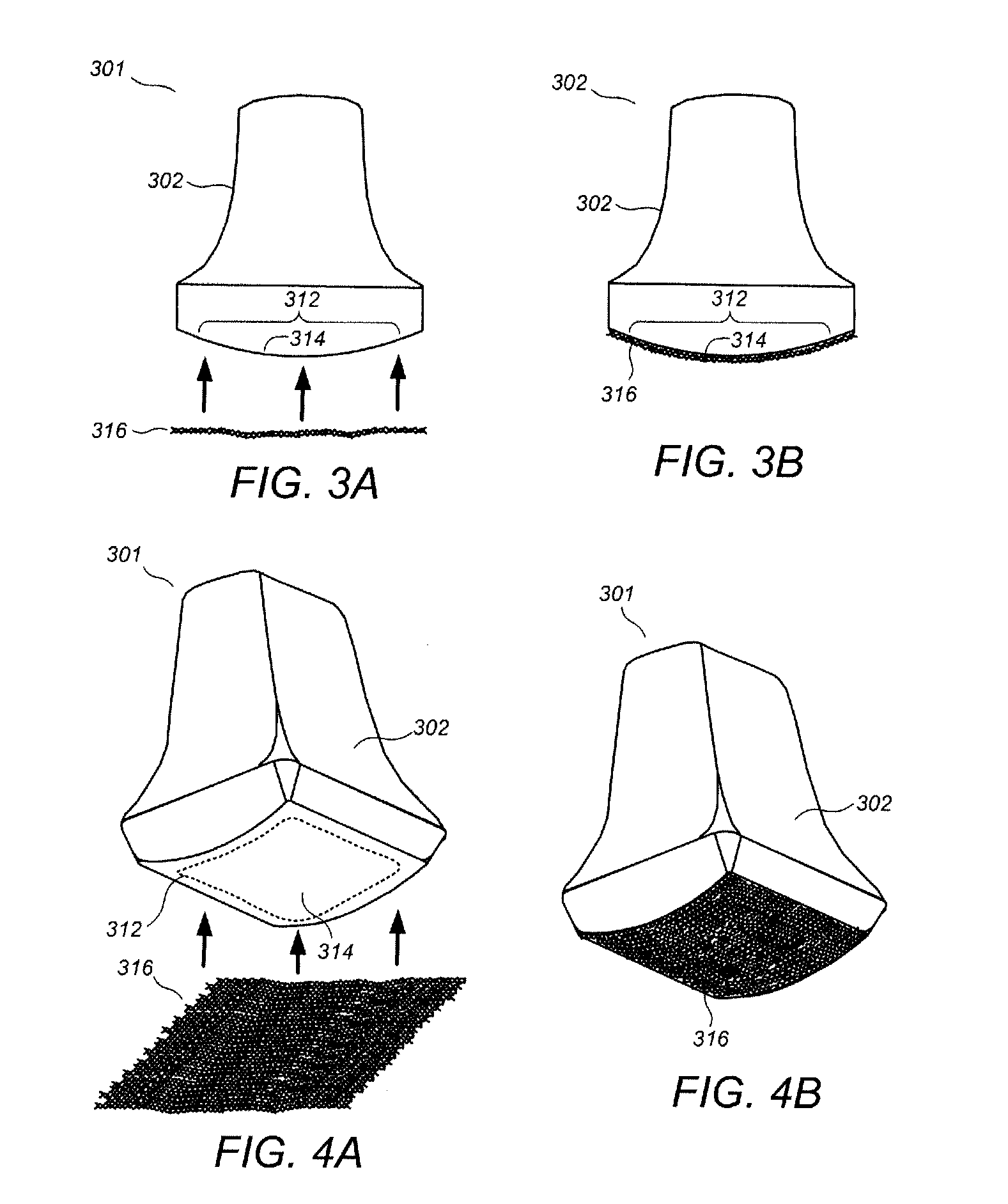Handheld volumetric ultrasound scanning
a volumetric ultrasound and scanning probe technology, applied in the field of ultrasonic imaging, can solve the problems of difficult process of freehand ultrasound elastography imaging, and substantially more slippery and unstable interfaces, etc., to achieve stable physical interface, facilitate positional stability of handheld volumetric ultrasound scanning probe, and improve image quality. the effect of image quality
- Summary
- Abstract
- Description
- Claims
- Application Information
AI Technical Summary
Benefits of technology
Problems solved by technology
Method used
Image
Examples
Embodiment Construction
[0021]FIGS. 3A, 3B, 4A, and 4B illustrate a stabilized handheld volumetric ultrasound scanning probe 301 according to a preferred embodiment. The stabilized handheld volumetric ultrasound scanning probe 301 comprises a smooth-capped handheld volumetric ultrasound scanning probe 302 similar to the handheld volumetric ultrasound scanning probe 102 of FIG. 1, supra, including a rigid, smooth cap 314 extending over a two-dimensional scan area 312. According to a preferred embodiment, the cap 314 is at least partially covered by a texturably couplant-porous material sheet 316. It has been found that the presence of the texturably couplant-porous material sheet 316 covering the cap 314 over at least a portion of the two-dimensional scan area 312 facilitates positional stability of the handheld volumetric ultrasound scanning probe 302 over the skin surface of the tissue volume, while at the same time having negligible adverse effect on image quality when compared to the use of the smooth-c...
PUM
 Login to View More
Login to View More Abstract
Description
Claims
Application Information
 Login to View More
Login to View More - R&D
- Intellectual Property
- Life Sciences
- Materials
- Tech Scout
- Unparalleled Data Quality
- Higher Quality Content
- 60% Fewer Hallucinations
Browse by: Latest US Patents, China's latest patents, Technical Efficacy Thesaurus, Application Domain, Technology Topic, Popular Technical Reports.
© 2025 PatSnap. All rights reserved.Legal|Privacy policy|Modern Slavery Act Transparency Statement|Sitemap|About US| Contact US: help@patsnap.com



